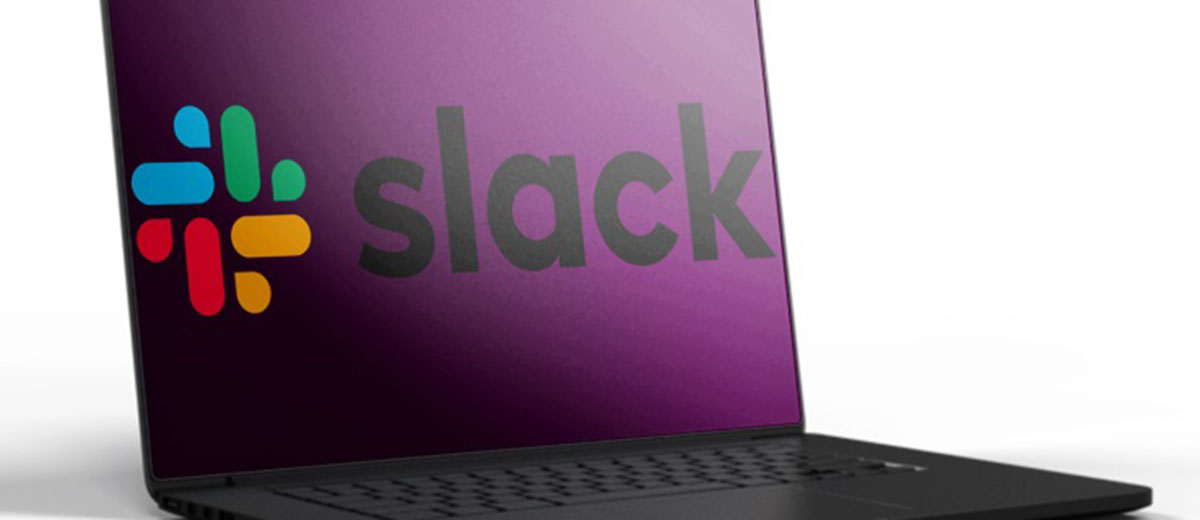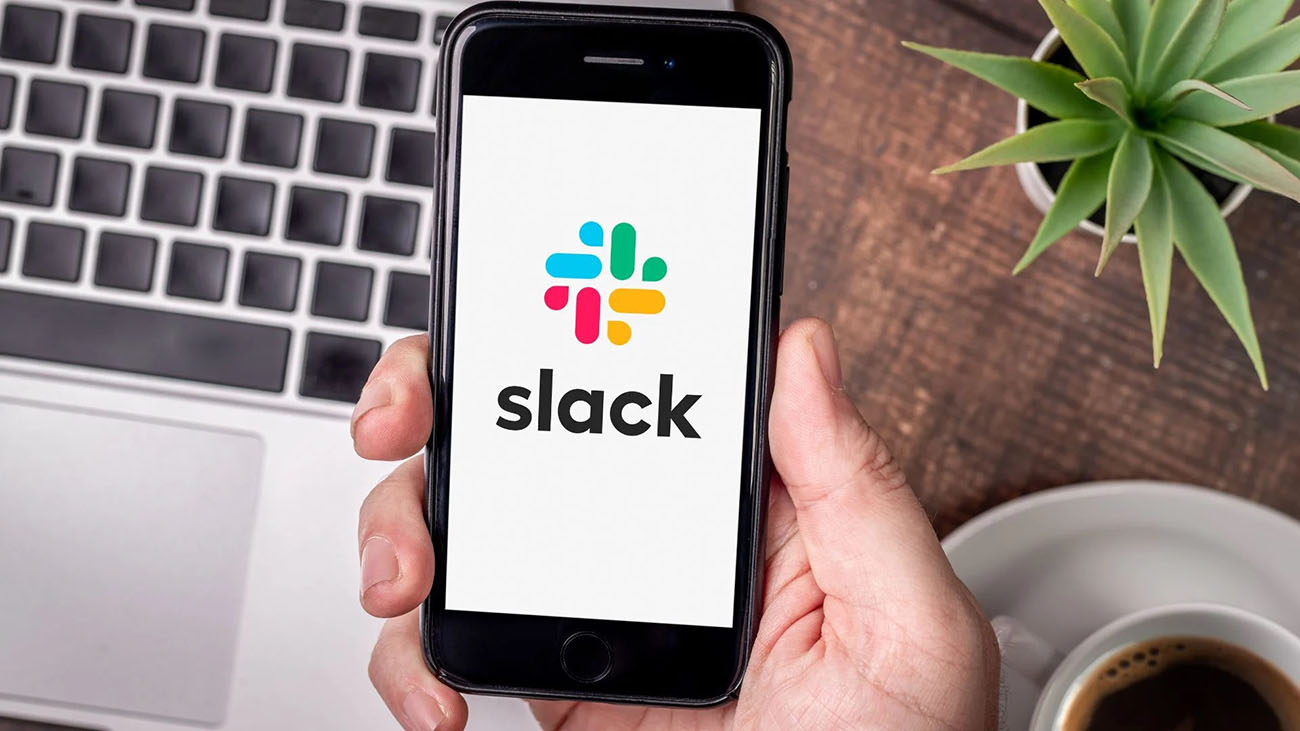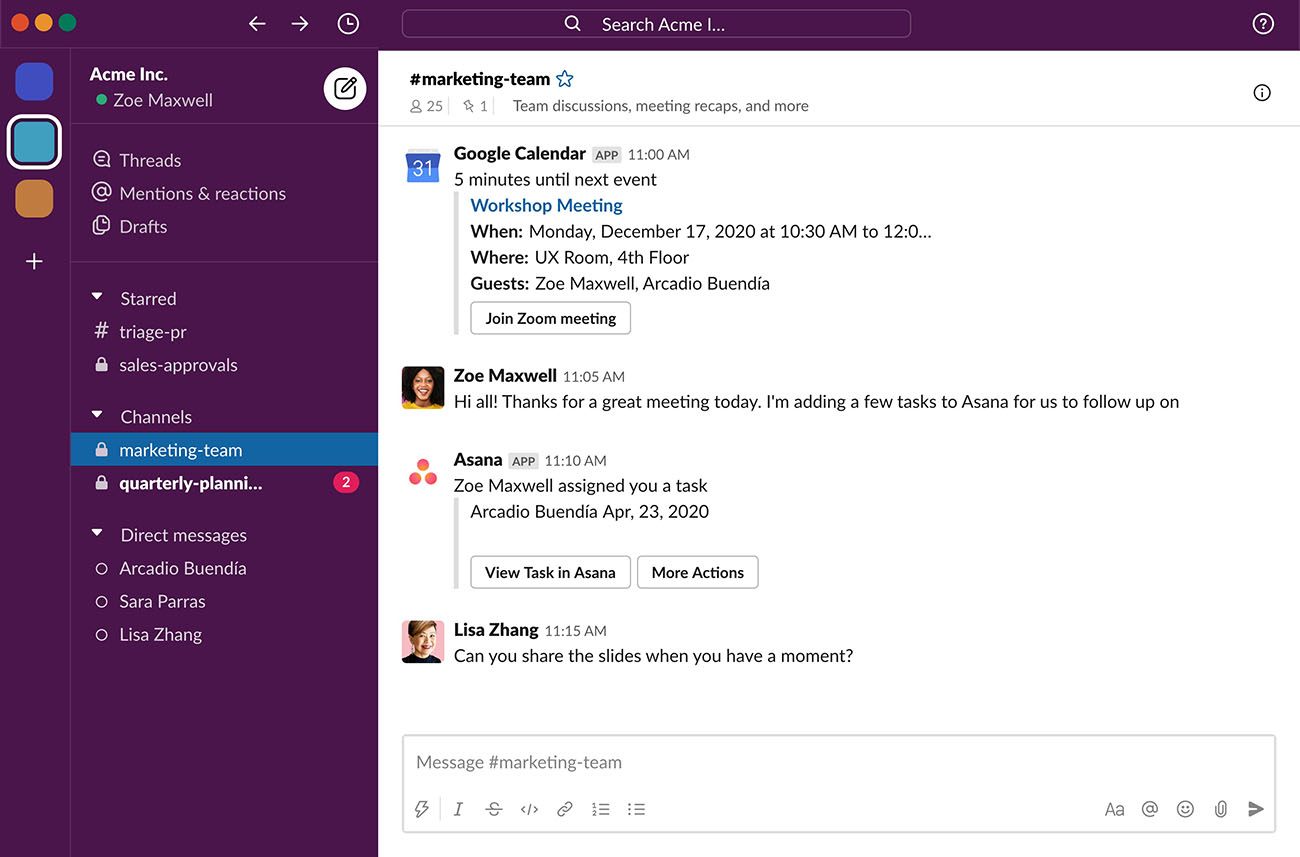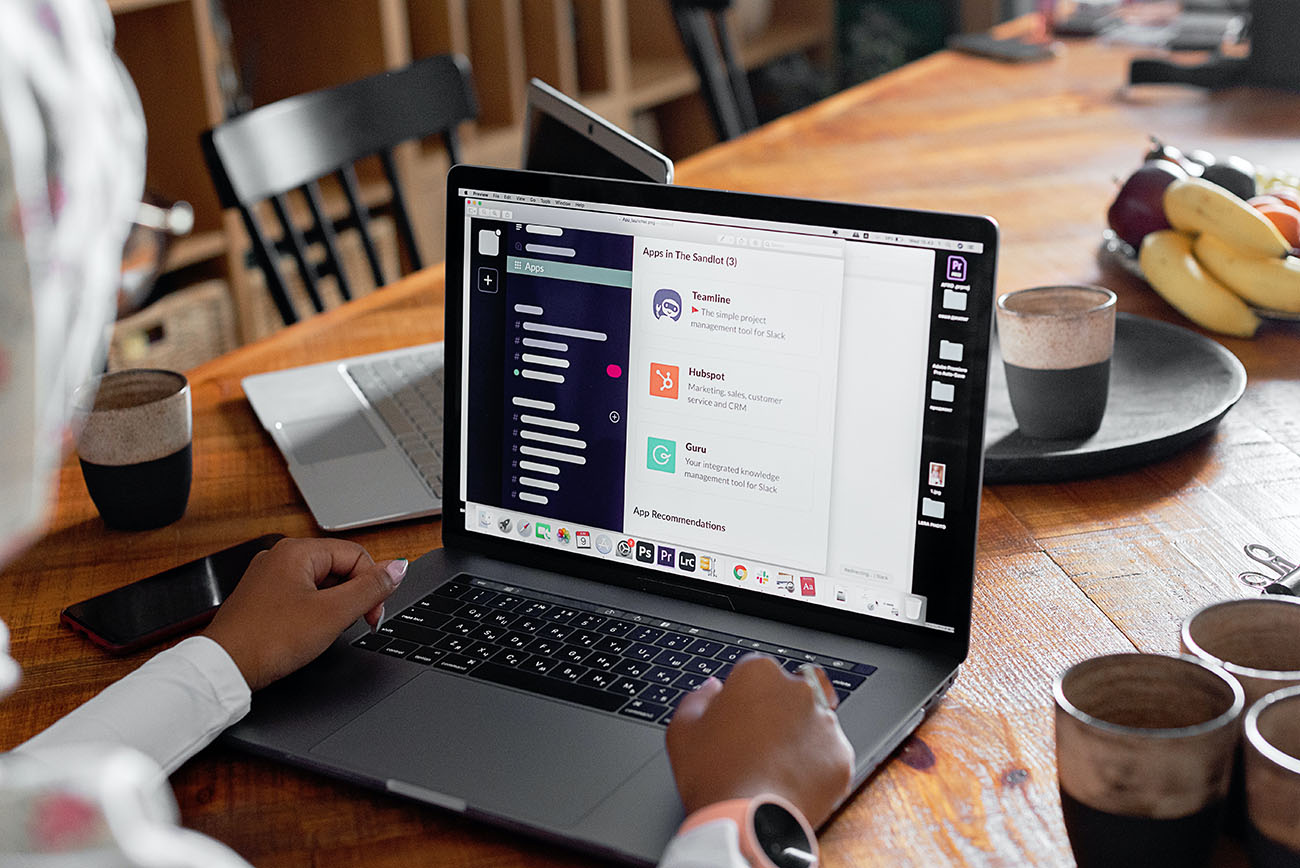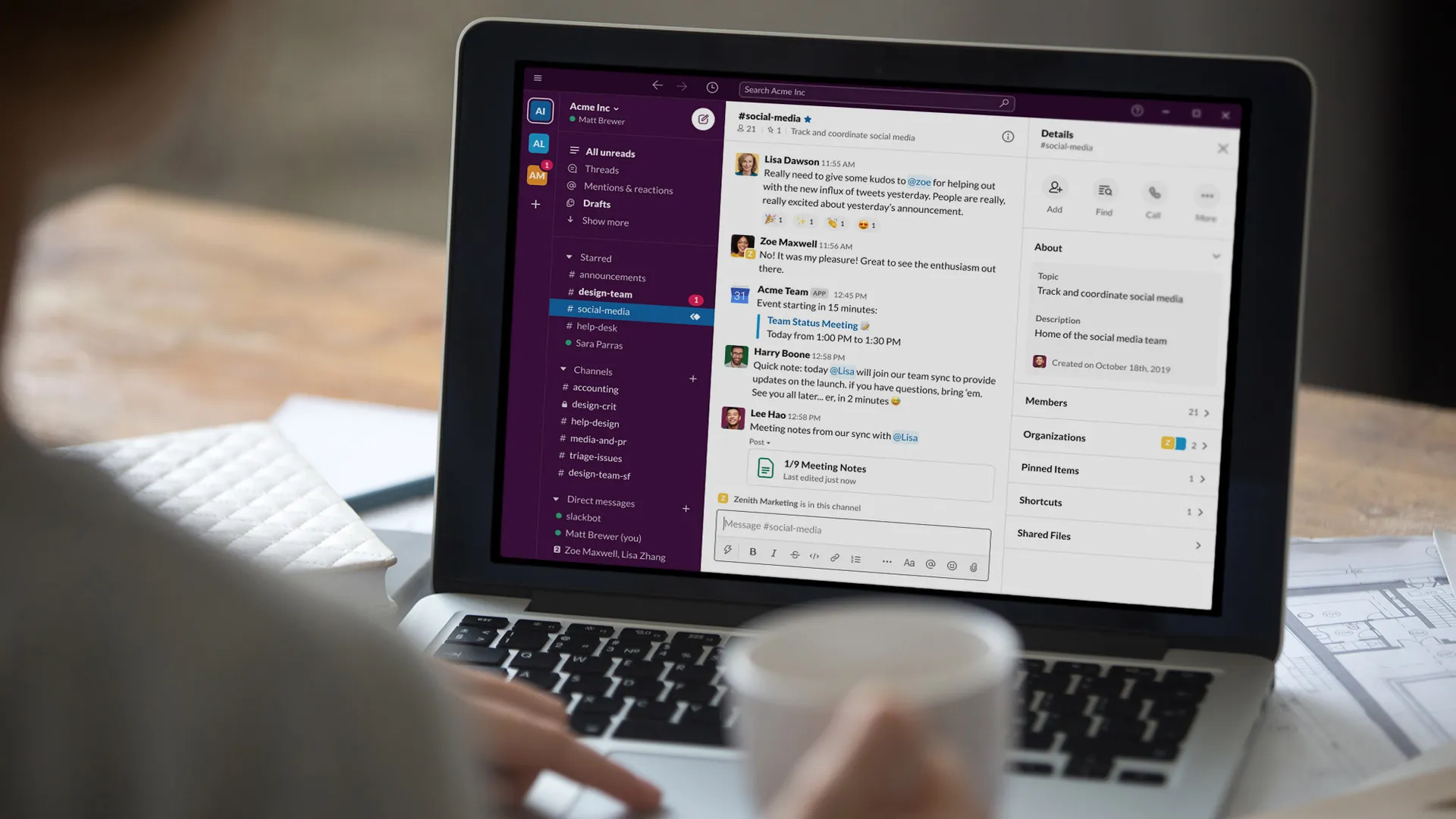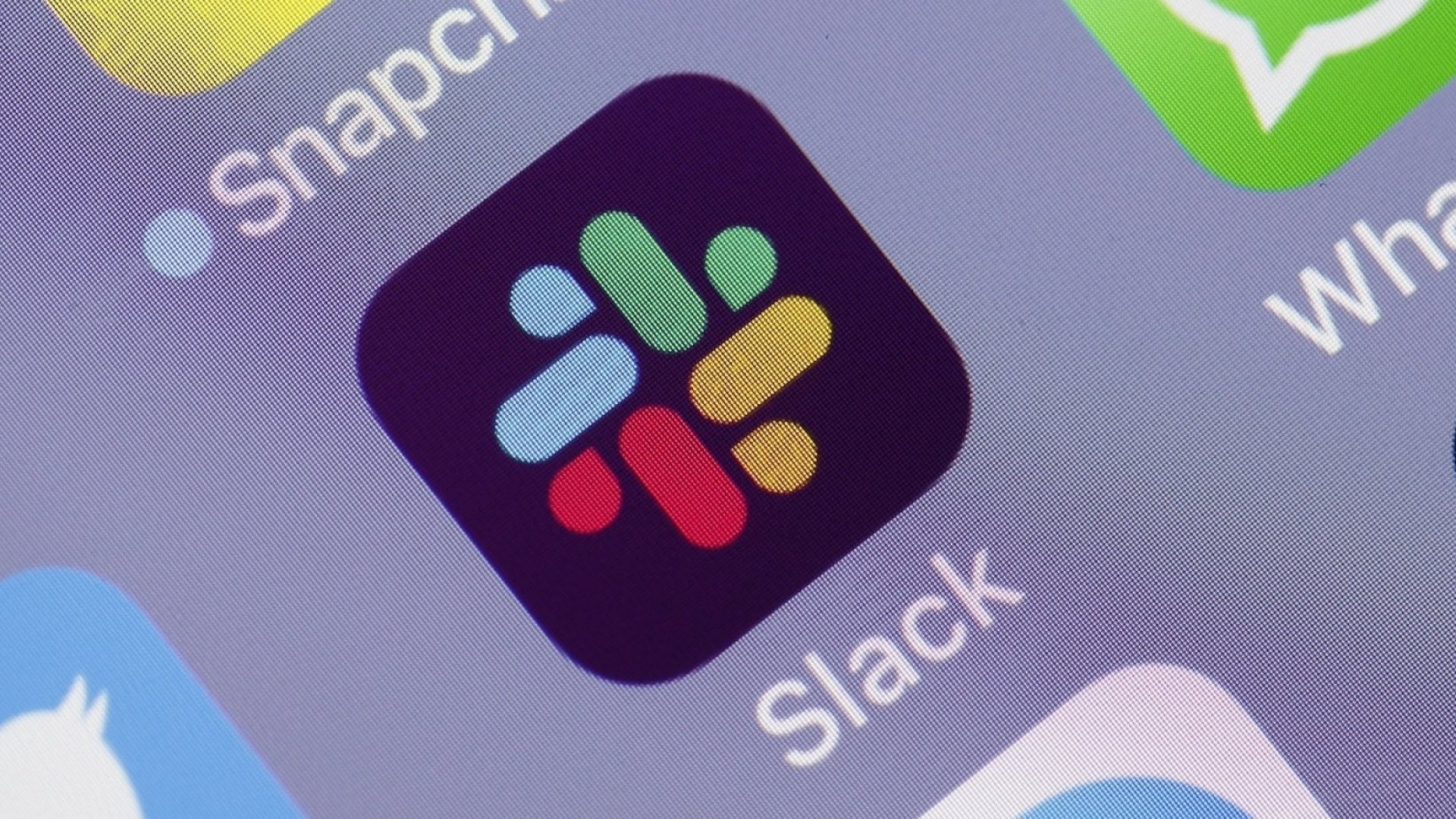Introduction
When it comes to team collaboration and communication tools, Slack and Microsoft Teams are two popular options that offer a range of features to streamline workflow and enhance productivity. However, in recent years, Slack has emerged as a frontrunner in the market, with many users finding it to be a better choice compared to Teams. In this article, we will explore the key reasons why Slack stands out as the preferred option for many teams and organizations.
Slack boasts a user-friendly interface that makes it incredibly easy to navigate and use. The clean and intuitive design allows users to quickly access conversations, channels, and files, facilitating seamless communication and collaboration. On the other hand, Microsoft Teams can feel overwhelming with its cluttered interface and complex organization of conversations and files.
Another advantage of Slack is its integration with a wide range of third-party tools and services. With Slack, users can effortlessly connect and utilize popular applications like Google Drive, Trello, Asana, and Dropbox, among many others. This seamless integration allows teams to work directly within Slack, eliminating the need to switch between multiple tools and minimizing disruptions to workflow.
Slack also offers extensive customization options, allowing users to personalize their workspace according to their preferences and needs. Users can create custom themes, set notification preferences, and even integrate custom chatbots to automate tasks and workflows. Microsoft Teams, on the other hand, has limited customization options, which can hinder the ability to tailor the platform to specific requirements.
When it comes to file sharing and collaboration features, Slack provides a user-friendly and efficient platform. Users can easily upload and share files, and collaborate on them in real-time. Additionally, Slack’s threaded conversations make it effortless to stay organized and focused on specific topics or projects. While Microsoft Teams offers similar capabilities, users have found Slack to be more intuitive and streamlined in terms of file management and collaboration.
One of the standout features of Slack is its robust search and archiving capabilities. With Slack’s powerful search functionality, users can easily find past conversations, files, and shared content, even if it was shared months ago. This ensures that important information is always accessible, contributing to effective knowledge management within teams. Microsoft Teams falls short in this aspect, with its search capabilities often being less comprehensive and reliable.
Additionally, mobile app experience is crucial for teams who need to stay connected on the go. Slack’s mobile app offers a seamless and user-friendly experience, allowing users to access conversations, notifications, and files wherever they are. Microsoft Teams also has a mobile app, but users have reported issues with its performance and user interface, making it less reliable for on-the-go collaboration.
Security and data protection are of utmost importance when it comes to collaboration tools. Slack prioritizes the security of user data, offering features such as two-factor authentication and enterprise-grade encryption. Furthermore, Slack allows users to set granular permissions for channels and files, ensuring that sensitive information remains protected. While Microsoft Teams also provides security features, Slack has garnered a reputation for its robust security measures.
When considering pricing and plans, Slack offers a variety of options suitable for different team sizes and budgets. From free versions for small teams to premium plans with enhanced features for larger organizations, Slack provides flexibility and scalability. Microsoft Teams, on the other hand, often requires a paid Microsoft Office subscription, making it less accessible for smaller teams or organizations on a tight budget.
In summary, Slack emerges as the preferred choice for team collaboration and communication, outperforming Microsoft Teams in several key areas. With its user-friendly interface, extensive integration options, customization capabilities, efficient file sharing and collaboration features, powerful search functionality, reliable mobile app experience, robust security measures, and flexible pricing plans, Slack offers a compelling solution for teams and organizations looking to optimize their productivity and streamline their workflow.
User Interface
The user interface of a collaboration tool plays a crucial role in its usability and user experience. Slack excels in this aspect, offering a clean and intuitive interface that makes it easy for users to navigate and work efficiently. The minimalist design of Slack’s interface ensures that conversations, channels, and files are easily accessible without overwhelming the user with unnecessary clutter.
The main dashboard of Slack presents users with a visually appealing and organized view of their workspace. The sidebar provides quick access to different channels and conversations, allowing users to switch between them seamlessly. The chat window itself is clean and well-structured, displaying conversations in a threaded format that makes it easy to follow and respond to messages.
Slack also offers a range of keyboard shortcuts that further enhance the user interface’s usability, allowing for quick navigation and interaction within the platform. These shortcuts can significantly improve productivity, especially for power users who rely heavily on the platform for communication and collaboration.
On the other hand, while Microsoft Teams offers a similar set of features, its user interface can feel overwhelming and cluttered. The platform presents a dense layout with multiple tabs, menu options, and toolbars that can be confusing for new users. Navigating through conversations and files in Microsoft Teams may require more effort and time compared to Slack’s clean and streamlined interface.
Slack’s user interface is also highly customizable, allowing users to personalize their workspace according to their preferences. Users can choose from a variety of color themes, customize notification settings, and even integrate custom chatbots to automate repetitive tasks. This level of customization empowers users to create a workspace that aligns with their individual workflow and preferences.
Moreover, Slack offers a wide range of app integrations that seamlessly integrate with its user interface. Users can connect popular apps like Google Drive, Trello, Asana, and more, extending the functionality of Slack and facilitating efficient collaboration within a single platform. The ability to access and interact with external tools without leaving Slack’s interface saves time and minimizes distractions.
Overall, Slack’s user interface sets it apart from Microsoft Teams, with its clean design, intuitive navigation, customization options, and seamless integration with external tools. These factors contribute to a superior user experience, making Slack a preferred choice for teams and organizations seeking an easy-to-use and efficient collaboration tool.
Integration with Other Tools
When it comes to team collaboration, the ability to integrate and work seamlessly with other tools is crucial. Slack outshines Microsoft Teams in this aspect by providing extensive integration options with a wide range of third-party applications.
Slack offers a robust App Directory that allows users to connect and integrate popular tools and services directly into their workspace. From project management tools like Trello and Asana to file storage systems like Google Drive and Dropbox, Slack provides a seamless experience by bringing various apps together in one place. This eliminates the need for users to switch between multiple platforms and streamlines workflow.
With its comprehensive API documentation and developer tools, Slack makes it easy to build custom integrations and connect internal systems with the platform. This empowers organizations to tailor Slack to their specific needs, creating a customized ecosystem that enhances productivity and collaboration.
Additionally, Slack offers a wide range of bot integrations that automate repetitive tasks and streamline workflows. Users can integrate chatbots for project management, scheduling, customer support, and more, making it easy to perform tasks without leaving the Slack environment. This integration and automation capability saves time and improves overall efficiency within teams.
Microsoft Teams, while it offers some integration options, falls short compared to Slack’s extensive and diverse integration capabilities. While Teams integrates well with other Microsoft Office applications, the range of third-party integrations is not as extensive as Slack. This limitation can be a drawback for organizations that heavily rely on specific tools or services outside of the Microsoft ecosystem.
Furthermore, Slack’s integrations are not limited to work-related tools. The platform offers a wide range of integrations with communication and collaboration tools like Zoom and Google Meet, allowing users to seamlessly initiate and join video meetings directly within Slack. This integration facilitates efficient communication and helps teams stay connected, regardless of their physical location.
In summary, Slack’s integration capabilities set it apart from Microsoft Teams. The extensive App Directory, API support, and custom bot integrations make Slack a powerful tool for streamlining workflows and enhancing productivity. While Microsoft Teams provides some integration options, it falls short in comparison, particularly when it comes to third-party app integrations. Organizations looking for a collaboration tool that seamlessly connects with their preferred tools and services will find Slack to be the better choice.
Customization Options
One of the standout features of Slack is its extensive customization options, allowing users to tailor their workspace to meet their specific preferences and needs. The ability to customize the platform enhances the user experience and fosters a sense of ownership over the workspace.
Slack offers various customization features, starting with the ability to choose from a wide range of color themes. Users can select a theme that aligns with their branding or personal taste, creating a visually appealing and personalized workspace. The ability to customize the color scheme contributes to a more enjoyable and engaging user experience.
Furthermore, Slack allows users to set notification preferences to manage disruptions and stay focused. Users can customize notifications for specific channels, conversations, or keywords, ensuring that they receive relevant and important alerts while minimizing distractions. This granular control over notifications enables users to maintain a productive and interruption-free working environment.
Another customization option is the ability to integrate custom chatbots. Slack’s robust API and developer tools facilitate the creation of custom chatbots that automate repetitive tasks and workflows. Users can build chatbots for scheduling, project management, and other business processes, tailoring Slack to their specific requirements. This customization capability enhances efficiency and streamlines workflow within teams.
In addition to color themes and notification settings, Slack also supports custom emoji and emoji reactions. Users can upload custom emoji to add a touch of personality and fun to their conversations. This customization option allows teams to create a unique and engaging atmosphere, fostering a sense of camaraderie and collaboration.
Microsoft Teams, while it offers some level of customization, has more limited options compared to Slack. In Teams, users can customize their profile picture, set a status message, and change the background of their meetings. However, the level of customization available in Teams is not as extensive or versatile as that of Slack.
Overall, Slack’s strong customization options make it a preferred choice for users looking to personalize their collaboration workspace. The ability to customize color themes, set notification preferences, integrate custom chatbots, and use custom emoji all contribute to an engaging and tailored user experience. Microsoft Teams, on the other hand, offers more limited customization options, which may hinder the ability to fully customize the platform to individual needs and preferences.
File Sharing and Collaboration Features
Efficient file sharing and collaboration are vital components of any team collaboration tool, and Slack excels in this area. With its user-friendly interface and robust features, Slack facilitates seamless file sharing and collaboration, making it a preferred choice for teams and organizations.
Slack allows users to easily upload and share files with team members. The platform supports a wide range of file types, including documents, images, videos, and more. Users can simply drag and drop files into Slack or use the file upload feature to share important documents and assets within the team.
Moreover, Slack offers real-time collaboration features that enable team members to work together on files. Users can open shared documents, make edits, and have discussions right within Slack. This eliminates the need for constant back-and-forth emails and enables teams to collaborate effectively, speeding up decision-making processes and improving overall productivity.
Slack’s threaded conversations feature is particularly beneficial for file collaboration. When a document is shared, users can start threaded conversations around specific elements or sections of the file. This ensures that discussions related to the file remain organized and easy to follow, helping team members stay focused on the relevant topics.
Version control is another key feature within Slack’s file sharing capabilities. Users can access previous versions of shared files, review changes, and restore earlier versions if needed. This prevents the confusion and mistakes that can arise when multiple team members are collaborating on the same document.
In addition to the collaborative features, Slack integrates with various file storage platforms such as Google Drive, Dropbox, and Box. Users can directly access files stored in these platforms within Slack, without the need to switch between different applications or search for files across multiple platforms. This integration streamlines the workflow and enhances productivity by providing easy and secure access to all relevant files within one platform.
On the other hand, while Microsoft Teams also offers file sharing and collaboration features, users have reported that Slack’s file management capabilities are more intuitive and efficient. Teams may require more steps to upload, share, and collaborate on files, which can slow down the workflow and create unnecessary complexities.
In summary, Slack’s file sharing and collaboration features provide a seamless and efficient platform for teams to work together. The ability to upload and share files, real-time collaboration, threaded conversations, version control, and integration with popular file storage platforms all contribute to a smooth and productive file sharing experience. While Microsoft Teams offers similar features, Slack’s user-friendly interface and streamlined functionality make it the preferred choice for teams and organizations looking to enhance their collaboration capabilities.
Search and Archiving Capabilities
Effective search and archiving capabilities are crucial for team collaboration tools, as they ensure that important information and conversations can be easily retrieved whenever needed. Slack excels in this aspect, providing powerful search and archiving features that contribute to efficient knowledge management within teams.
Slack’s search functionality allows users to quickly find relevant messages, files, and shared content. The search bar at the top of the interface enables users to enter specific keywords or phrases and receive instant search results. Slack’s search algorithm is highly effective, even when searching through extensive conversation history or large file libraries.
One of the standout features of Slack’s search is the ability to search across multiple channels and conversations simultaneously. This ensures that users can find information from different sources without having to manually search through each individual conversation. With a few keystrokes, users can access past discussions, shared files, and important information, saving time and effort.
Additionally, Slack’s search results are displayed in a structured and organized manner. Users can filter search results based on channels, collaborators, and file types, making it easy to narrow down the search and find the exact information they need. This targeted search capability reduces the chances of overlooking critical information and streamlines the retrieval process.
Slack also offers advanced search operators, such as using quotation marks to search for exact phrases, or using the “from:” and “to:” operators to search for messages from or to specific users. These operators provide users with greater control and precision in their search queries, ensuring that they find the most relevant results.
In terms of archiving, Slack provides the ability to archive and organize channels and conversations. Users can archive channels that are no longer actively used but still need to be accessible for reference. Archiving channels helps declutter the interface and allows for better organization of active conversations. Archived channels can be easily accessed and searched when needed, ensuring that historical information is readily available.
On the other hand, Microsoft Teams also offers search and archiving capabilities, but users have reported that Slack’s search functionality is more comprehensive and reliable. Teams’ search results sometimes lack the accuracy and precision seen in Slack, making it more challenging to find specific information within conversations and shared files.
In summary, Slack’s robust search and archiving capabilities contribute to effective knowledge management within teams. The powerful search functionality, advanced search operators, structured search results, and the ability to archive and organize channels all enhance the discoverability and accessibility of information. This sets Slack apart from Microsoft Teams and makes it a preferred choice for teams and organizations looking for a collaboration tool with efficient search and archiving features.
Mobile App Experience
In today’s increasingly mobile-centric world, having a seamless and user-friendly mobile app experience is crucial for effective team collaboration. Slack stands out in this area, offering a mobile app that allows users to stay connected and collaborate on the go.
The Slack mobile app is available for both iOS and Android devices, providing a consistent experience across platforms. The app is well-designed, intuitive, and optimized for mobile devices, making it easy for users to navigate and access their conversations, channels, and files.
The mobile app provides all the essential functionality of the desktop version, allowing users to send and receive messages, upload files, join channels, and participate in discussions. The app’s interface is clean and organized, ensuring that users can find what they need quickly and efficiently.
One of the key advantages of the Slack mobile app is its responsiveness and fast performance. Users can open the app, access their conversations, and send messages without any noticeable lag or delays. This real-time responsiveness ensures that users can stay connected and respond promptly, even when they are away from their desks.
Moreover, the Slack mobile app offers push notifications, keeping users informed of new messages or activity in their channels and conversations. Users can customize their notification settings to determine which alerts they receive, ensuring that they stay updated on important information without being overwhelmed by unnecessary notifications.
Collaborating on files is also seamless within the mobile app. Users can easily view and comment on shared files, making it convenient to review documents, provide feedback, and collaborate in real-time, regardless of their location. This functionality is particularly valuable for remote teams or users who frequently work outside the office.
While Microsoft Teams also offers a mobile app, users have reported issues with its performance and user interface. The Teams app can be slow, unresponsive, and lack certain features available on the desktop version. This can be frustrating for users who rely on efficient mobile collaboration.
In contrast, Slack’s mobile app provides a smooth and user-friendly experience, allowing users to access their conversations and collaborate effectively regardless of their location. The app’s responsive performance, push notifications, and seamless file collaboration make it a preferred choice for teams and individuals who require a reliable mobile collaboration platform.
Overall, Slack’s mobile app experience sets it apart from Microsoft Teams by providing a user-friendly and responsive platform for team collaboration on the go. With its fast performance, intuitive interface, push notifications, and seamless file collaboration, the Slack mobile app ensures that users can stay connected and productive, regardless of their location.
Security and Data Protection
When it comes to collaboration tools, ensuring the security and protection of sensitive data is of utmost importance. Slack recognizes the significance of this aspect and provides robust security measures to safeguard user information and maintain data integrity.
Slack prioritizes data security by implementing industry-leading practices. The platform offers two-factor authentication (2FA), an additional layer of security that helps prevent unauthorized access to user accounts. With 2FA enabled, users are required to provide a second form of authentication, such as a verification code or fingerprint, along with their password when logging in.
Furthermore, Slack utilizes enterprise-grade encryption to protect user data. All data sent and received within Slack, including messages, files, and shared content, is encrypted both in transit and at rest. This ensures that the data remains secure and protected from unauthorized access or interception.
Slack also offers granular controls for user permissions. Team administrators can manage permissions and access levels for individual users, ensuring that sensitive data is only accessible to authorized personnel. This feature is particularly useful for organizations that deal with confidential or sensitive information on a regular basis.
Another security feature offered by Slack is the ability to set retention policies. With retention policies, organizations can define how long messages and files are retained within Slack. This helps organizations comply with data retention regulations and ensures that information is securely stored and can be accessed when needed.
Microsoft Teams also provides security features such as 2FA and encryption. However, Slack has gained a reputation for its robust security measures, with many users finding it to be more reliable and trustworthy in terms of data protection.
In addition to its strong security measures, Slack has a transparent approach to privacy and data protection. The platform provides detailed information about its data practices and adheres to stringent privacy standards. Users can rest assured that their data is handled responsibly and in accordance with privacy laws and regulations.
Overall, Slack’s emphasis on data security, encryption, user permissions, and retention policies, along with its transparent approach to privacy, solidifies it as a secure collaboration platform. While Microsoft Teams offers similar security features, Slack’s reputation for robust security measures and clear privacy practices positions it as a trusted choice for teams and organizations looking to safeguard their sensitive data.
Pricing and Plans
When considering a collaboration tool, pricing and plans play a significant role in the decision-making process. Slack offers a range of pricing options to accommodate teams of different sizes and budgets, providing flexibility and scalability.
Slack’s pricing model consists of several tiers. The first tier is the Free plan, which offers a basic set of features and functionality for small teams or those looking to try out the platform. The Free plan provides access to up to 10,000 searchable messages, 10 integrations with third-party apps, and 5GB of file storage per team member.
For teams and organizations that require more advanced features and capabilities, Slack offers paid plans. The plans are categorized as Standard, Plus, and Enterprise Grid, each with increasing functionality and support options.
The Standard plan is designed for small and medium-sized teams. It includes unlimited searchable message archives, unlimited app integrations, 10GB of file storage per team member, and enhanced security features like advanced identity management and compliance exports.
The Plus plan builds upon the features of the Standard plan and is suitable for larger organizations. It offers additional security controls, 20GB of file storage per team member, and priority support.
The Enterprise Grid plan is designed for large enterprises with complex collaboration requirements. It includes advanced administration, security, and compliance features. The Enterprise Grid plan offers unlimited workspaces, custom contract terms, and access to additional Enterprise Grid-only features.
Pricing for the paid plans varies based on the number of active users and the region. The cost per user decreases as the number of active users increases, incentivizing larger organizations to choose Slack as their collaboration platform.
On the other hand, Microsoft Teams is bundled with Microsoft Office 365 subscription plans. This means that to access the full features of Microsoft Teams, users need to have a paid Microsoft Office 365 subscription. While Teams does provide some basic functionality for free, accessing more advanced features typically requires a subscription.
In summary, Slack offers a range of pricing options to cater to teams and organizations of various sizes and needs. The Free plan serves as a starting point for small teams, while the Standard, Plus, and Enterprise Grid plans offer more advanced features and scalability. Microsoft Teams, on the other hand, generally requires a paid Microsoft Office 365 subscription for full functionality, making Slack’s pricing structure more flexible and accessible, especially for smaller teams or those on a tight budget.
Conclusion
When it comes to team collaboration and communication tools, Slack emerges as the preferred choice for many teams and organizations. With its user-friendly interface, extensive integration options, customization capabilities, efficient file sharing and collaboration features, powerful search functionality, reliable mobile app experience, robust security measures, and flexible pricing plans, Slack offers a compelling solution for optimizing productivity and streamlining workflow.
The clean and intuitive design of Slack’s user interface allows for easy navigation and seamless communication. Users can quickly access conversations, channels, and files, enhancing collaboration and productivity. Additionally, Slack’s integration with a wide range of third-party tools enables teams to work directly within the platform, eliminating the need to switch between multiple applications and minimizing disruptions to workflow.
Customization options in Slack allow users to personalize their workspace according to their preferences and needs. From color themes to notification settings and custom chatbots, Slack empowers users to create a tailored and efficient collaboration environment.
Slack’s file sharing and collaboration features further enhance productivity by enabling seamless uploading, sharing, and real-time collaboration on files. The threaded conversation feature and version control facilitate organized and efficient collaboration on shared documents.
Slack’s robust search and archiving capabilities ensure that important information and past conversations can be easily retrieved. Users can search across multiple channels, filter results, and access previous versions of files, contributing to effective knowledge management within teams.
The mobile app experience offered by Slack allows users to stay connected and collaborate on the go. With a responsive interface, push notifications, and seamless file collaboration, teams can maintain productivity and connectivity, regardless of their location.
When it comes to security and data protection, Slack prioritizes user information by offering two-factor authentication, enterprise-grade encryption, granular user permissions, and retention policies. The platform’s transparent approach to privacy and compliance further reinforces its commitment to data security.
In terms of pricing and plans, Slack provides a range of options suitable for different team sizes and budgets. From free versions for small teams to premium plans with enhanced features for larger organizations, Slack offers flexibility and scalability. This stands in contrast to Microsoft Teams, which typically requires a paid Microsoft Office 365 subscription for full functionality.
In conclusion, Slack’s comprehensive features, user-friendly interface, extensive integration options, customization capabilities, efficient file sharing and collaboration features, powerful search functionality, reliable mobile app experience, robust security measures, and flexible pricing plans position it as a top choice for teams and organizations seeking to optimize their collaboration and communication efforts.







